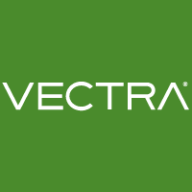

Find out in this report how the two Network Traffic Analysis (NTA) solutions compare in terms of features, pricing, service and support, easy of deployment, and ROI.


The Scrutinizer incident response system leverages network traffic analytics to provide active monitoring, visualization, and reporting of network and security incidents. The system quickly delivers the rich forensic data needed by IT professionals to support fast and efficient incident response.
Vectra AI is used for detecting network anomalies and potential malicious activities, providing visibility into network traffic and enhancing threat detection across environments.
Organizations deploy Vectra AI mainly on-premises with additional cloud components. It helps with compliance, incident response, security monitoring, detecting insider threats, and correlating network events. Vectra AI captures and enriches network metadata, provides detailed dashboards, reduces false positives, and supports cross-environment behavioral analysis to enhance threat detection and prioritization. While valued for its high accuracy and alert aggregation, it has room for improvement in UI/UX, packet management, and integration with SIEMs and other tools. It is noted for expensive pricing and limited proactive threat response features.
What are Vectra AI's most valuable features?In specific industries, Vectra AI is deployed to monitor complex networks and alleviate challenges in threat detection. It is particularly effective in sectors requiring stringent compliance and security measures, offering insights and capabilities crucial for protecting sensitive data and maintaining operational integrity.
We monitor all Network Traffic Analysis (NTA) reviews to prevent fraudulent reviews and keep review quality high. We do not post reviews by company employees or direct competitors. We validate each review for authenticity via cross-reference with LinkedIn, and personal follow-up with the reviewer when necessary.